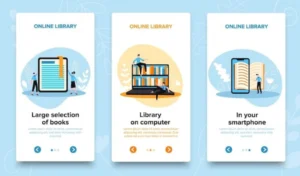Latest Trends in React Native App Development

React Native has emerged as the go-to tool for developers aiming to bridge the gap between functionality and user experience. It’s no longer just about building apps. This is about crafting mobile applications that adapt, evolve, and redefine user interaction.
From AI-powered features to cross-platform agility, the latest trends in React Native app development are pushing the boundaries of what’s possible, making apps smarter, faster, and more responsive to the ever-changing demands of the digital age.
In this blog, we delve into the most exciting trends transforming React Native today—trends that not only enhance developer productivity but also create rich user experience. Today, we explore how these innovations are driving the next wave of mobile app evolution.
1. Faster Reaction Times with the New JavaScript Compiler
An increase in the utilization of this specialized JavaScript compiler purified at the Hermes engine can be observed as one of the most striking tendencies in React Native app development. It targets primarily Android applications, “Hermes” – an open-source software by Facebook – is aimed to make Mobile First Web Applications work faster and more efficiently using React Native’s power.
Hermes improves the overall user experience, making React Native apps faster and more efficient. This feature enables developers to execute actions more quickly. Top React Native app development company also utilizes this feature and suggest its more usage potential in the market.
2. Use of AI and ML Technologies
Artificial Intelligence (AI) and Machine Learning (ML) tools are now increasingly being used by developers to build React Native apps. They enable them to offer such AI-driven app features like chatbots with personalized recommendations or voice identification which enhances user engagement experience on mobile devices
Besides this, React Native developers use react native for mobile app development due to its ability to run on multiple platforms allowing for better integration of AI/ML models into mobile applications. This, as a result, enables businesses to develop intelligent applications that are more user-friendly.
3. TypeScript as a Cross-Platform Development Tool
TypeScript has grown in popularity among React Native developers. It is because it includes a strong typing system besides being able to detect errors very well. TypeScript is now commonplace for developers building React Native apps who want to write more reliable code with fewer bugs and, therefore, make maintenance easier than ever before.
This feature exemplifies a trend towards type safety plus better tooling leading to effective scaling across platforms by any given team that wants their application to remain maintainable even as they grow larger over time.
4. Modular Architecture and Component Reusability
Modular architecture and component reusability are also among the latest trends in React Native app development. By splitting code into smaller independent modules, developers can improve collaboration and simplify code maintenance. Reusable components with React Native enable teams to release updates faster and build apps more efficiently.
It’s an indication of a dire need for scales that could accommodate changes quickly without falling apart at all times while meeting all business requirements. All in all, this just helps bring another aspect of Scrum into the game when working in a technology-driven business environment!
5. Security Features That Are More Enhanced
Security has emerged as a top priority in the development process of React Native applications due to the growing amounts of sensitive data being handled by mobile apps nowadays. These new tools and libraries provide better security with features like stronger encryption methods, biometric identification systems, secure storage solutions etcetera for instance.
SSL pinning (man-in-the-middle attack prevention), 2FA (two-factor authentication) protocols, or even more advanced techniques of data encryption are some of the security features developers focus on with GDPR compliance and user data protection in mind all the time.
6. Growing Popularity of Super Apps
Super apps are slowly becoming a trend across the globe hence this is one other latest development happening now internationally. Due to its ability to work on multiple platforms at once, React Native has been Robustly adopted for super apps where it enables developers to create in one application such features as online merchant services that also offer social media services and even financial apps.
The platform’s ability to cover a wide range of uses while ensuring optimal performance makes it stand out in terms of developing a super-app particularly in Asia among other places as well.
7. React Native and AR Thriving Together
The implementation of the Augmented Reality (AR) function in React Native applications is now gaining speed, especially in the retailing, education, and real estate sectors. Using AR/VR frameworks like ViroReact developers can achieve immersive user experiences that increase user engagement on websites. Simultaneously, React Native allows developers to introduce these capabilities both on Android and iOS devices at a low cost.
8. Debugging and Performance Monitoring through Flipper
React Native developers have found Flipper very useful because of its debugging enhancements as well as performance monitoring abilities. Developers using Flipper can audit an application’s state, observe interactions between it over the network, or monitor UI performance bottlenecks in runtime. This shows that many sophisticated tools are being developed for increased app quality and a better cross-platform user experience, as evidenced by the increased uptake of Flipper.
9. React Native for Web to Support Web Development
The use of React Native by developers has increased. This is being done in order to create apps that can be used on both web and mobile devices because even desktop sites now support mobile sites functioning. This means that code can be re-used and development time decreased thus resulting in cross-platform apps that look similar on different devices. Businesses can manage both mobile and web platforms easily without duplicating efforts because they share a common codebase by React Native`9`s usage.
10. Community and Ecosystem Growth
React Native’s open-source community is growing all the time as it keeps on coming up with new libraries, tools, and methodologies that simplify the development process. In terms of testing, deployment, or debugging there are now many different solutions. Having this large community means that developers always have access to the latest technologies which enables them to solve problems faster than any other thing could possible.
Conclusion
React Native will expose its full power when these trends are embraced by both enterprises and individual app publishers taking advantage of it implying that their apps can satisfy their current and prospective clients’ needs. Therefore, these trends are set to influence the future of React native app development. However, since deploying these innovations requires expertise you will need to hire dedicated mobile app developers who specialize in using these latest trends to build top-notch mobile apps.
Author Bio:
This is Aryan, I am a professional SEO Expert & Write for us technology blog and submit a guest post on different platforms- Technooweb provides a good opportunity for content writers to submit guest posts on our website. We frequently highlight and tend to showcase guests.






